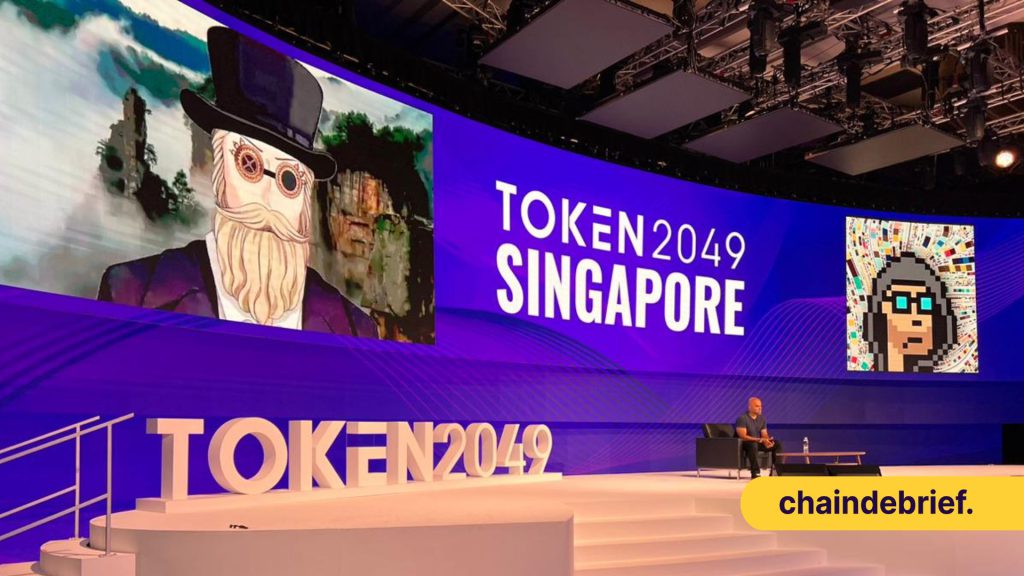The bear market has not been kind to the Non-Fungible Token market. With transaction volumes on OpenSea down 99.9%, and blue-chip projects trending lower in both $ETH and dollar value, it would be easy to assume that they have taken the back seat for now.
Punk6529 and WhaleShark, think otherwise.
Speaking at Token2049, they highlighted the possible value capture of PFPs, achieving product-market fit in the bear market, and why NFTs could be the backbone of Web3.0.
Nice PFP, But Have You Seen The Technology?
While some liken NFTs to modern art, the ones that have captured mainstream attention have tended to be Profile Picture-based collections (PFPs).

Data on Opensea corroborates that, with 16 of the top 20 projects by sales volume being PFP-based projects.
However, most of these projects remain exclusive, with only a few thousand items available, even for the largest ones like BAYC or Azuki. Furthermore, some holders may have multiples of the same collection, artificially reducing supply further.
With mainstream crypto adoption, millions, if not billions, are going to want a piece of this exclusivity. As Punk 6529 puts it, “everyone is going to have avatars.“
Furthermore, this may even translate back into art collections and 1-of-1s such as Fidenzas and squiggles.
The underlying technology and utility possible with NFTs are also nothing to scoff at.
From strong network effects to lifetime passes, NFTs have surpassed their “right-click save as” status, the success of
Even Goblins Can Be Beautiful To The Right Person
Beauty is in the eye of the beholder – those words ring true, even in the NFT world.

In the same vein, not every NFT can be appreciated by all Web3.0 participants, evident in the range of metas present.
From Azukis to fine art to cute animals, each meta represents a different group of crypto participants, ready to forge their own journey in NFTs.
“For people coming into the fungible world, they spend too much time worrying about what they don’t like“
Regardless, each and every NFT collection has the potential to achieve product-market fit. By creating a community behind the project, those able to identify with it’s message have given value to it.
Too much time is spent on wondering if a project has potential for a 10x, or is likely to appeal to a mass audience.
And if a project does not currently have a strong community?
“Build your own network effects“
Could your Grandma Own An NFT?
Despite most Web3.0 users being able to seamlessly navigate the NFT space, the question of user interface and experience is still a prevalent topic.
“I do not feel comfortable sending a crypto-naïve person to send something in size on chain“
With the current Web3.0 trend seeming to be hacks and exploits, the fear of doing anything on-chain has only increased.
I got hacked last night on @opensea. Apes, doodles, eth. It’s not pretty.
— jf❌ (@jfx) September 25, 2022
Please do not buy any of these items or anything else from my wallets. Thanks pic.twitter.com/ynSTypo7EC
The panel also notes that service providers in Web3.0 do not yet “take user security seriously“.
Till users are ensured that their precious JPEGs cannot be phished via a single click, the world of crypto may not seem pleasant for mass adoption.
Additionally, they also highlight that those in NFTs are still early adopters, despite it now receiving mainstream media coverage.
“I look at these PFP collections as very very early, very very strong.“
Betting on the top collections to continue their tear on Web3.0, and as pieces of NFT history – may just be the play of a lifetime.
Also Read: Are Regulators Crypto’s Biggest Challenge Or Could They Actually Help With Web3 Adoption?
[Editor’s Note: This article does not represent financial advice. Please do your own research before investing.]
Featured Image Credit: Chain Debrief



































